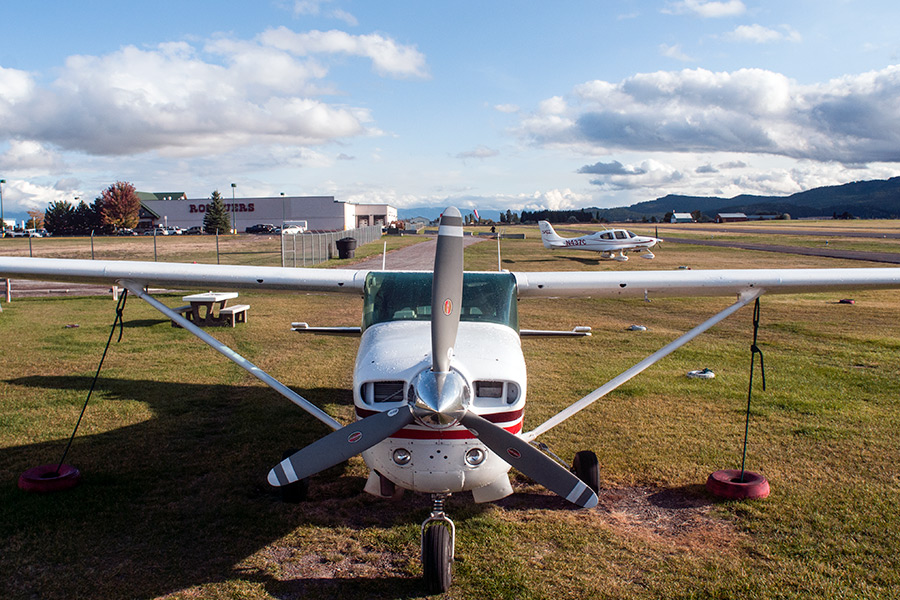Faced with a potentially historic decision, the Kalispell City Council will wait until August to vote on whether to permanently close the 88-year-old municipal airport.
The council was tentatively scheduled to decide the matter at its July 5 meeting, but councilors Kari Gabriel and Sandy Carlson were unable to attend that meeting. At its work session on June 27, the council agreed that everyone should be in attendance for a vote of this magnitude and agreed to wait until a meeting in August before settling the matter.
“It’s important with an issue this big that everybody be there,” Ward 4 Councilor Phil Guiffrida said afterward.
The council will vote on a resolution of intent to adopt the South Kalispell Urban Renewal Plan at its July 5 meeting. The council will then review the complicated and controversial airport issue at a work session on July 11.
An exact date when the council will vote on the closure will be decided after the work session.
“With an issue this big, you want to make sure you’ve looked at everything,” Guiffrida said. “There are pretty long-lasting effects either way.”
After decades of debate and indecision and six major studies costing over $1 million, the city is approaching a watershed moment that could settle one of its longest running disputes. The council plans to vote on a resolution to either close the airport along U.S. 93 South or move forward with trying to make it financially sustainable. Neither option would be without its sizable long-term challenges but the council appears ready to at least pick a direction.
In light of the upcoming decision, the city has received a significant amount of public input from both sides of the debate. Airport supporters showed up to a work session earlier this month and spent over an hour defending the facility while a campaign opposing further upgrades at the site has restarted, similar to 2013, when residents voted on a ballot referendum.
Some recent ideas have resurfaced that could keep the airport intact but significantly changed its operational setup, such as making users pay month-by-month leases at the site and for maintenance, similar to the city’s policy for Buffalo Hill Golf Club.
The latest airport study, an urban renewal blueprint for south Kalispell completed by CTA Architects Engineers, identified significant deferred maintenance and safety issues at the facility. The firm also found the airport loses money on an annual basis. The airport operated at an average net loss of $99,499 per year from 2010 to 2014, according to CTA. That includes depreciation, which is not a direct cash expense and represents the decline in value of an asset that has already been paid for.
To keep the airport operational, the city would need to invest $900,000 over five years to address overdue maintenance needs and safety issues, according to CTA’s report. After the initial investment, the site would operate at an ongoing loss of $300,000, the report stated.
“This means that the City will need to invest more money than the Airport is expected to return,” CTA stated.
The report added, “However, cities do not operate like for-profit enterprises. Many essential city functions, such as schools, emergency services, and parks and recreation, do not generate profit. These services increase value of private enterprises that use them, which comes back to the City in the form of tax and licensure revenue and quality of life and emergency preparedness.”
CTA’s report mentions the site offers “economic benefit for the community by way of jobs and local tax base” but does not provide details of the prospective finances.
Closing the airport “has the possibility of being a complicated and costly alternative,” CTA stated. It would cost the city at least $2.9 million to buy out the on-site leases. The firm projected that the city would not generate enough revenue from the sale of the airport land to cover the costs associated with selling; however it could generate new tax revenue. The city could tap into its tax increment finance fund to pay for demolition costs, but the TIF funds cannot be used for upgrades at the airport.
The tax increment finance dollars will sunset, or go away, in 2020, when the TIF district expires, creating a significant deadline for the city if it wants to tap into the funds.
